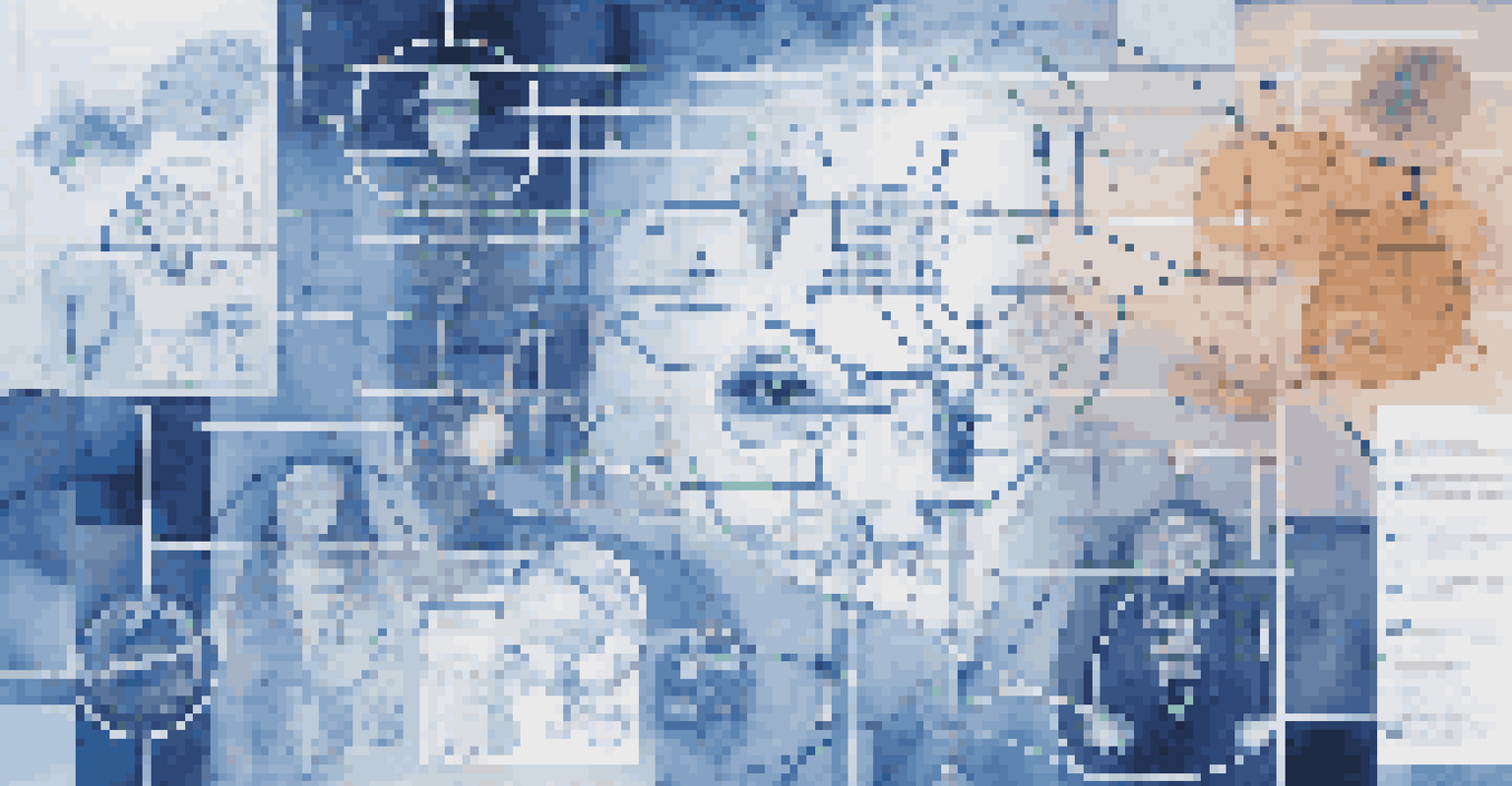AI's Contribution to Public Health Surveillance and Response

Understanding AI in Public Health Context
Artificial Intelligence (AI) refers to the simulation of human intelligence processes by machines, particularly computer systems. In the realm of public health, AI encompasses a range of applications, from data analysis to predictive modeling. By leveraging vast amounts of health-related data, AI helps public health officials make informed decisions quickly and effectively.
The greatest danger in times of turbulence is not the turbulence; it is to act with yesterday's logic.
For instance, AI algorithms can identify patterns in disease spread that might not be immediately obvious to human analysts. This capability is vital in times of outbreak, where timely insights can save lives. Essentially, AI acts as a powerful tool that enhances our understanding of health dynamics in populations.
Moreover, the integration of AI into public health can lead to more efficient resource allocation. By predicting where outbreaks are likely to occur, health authorities can deploy resources strategically, ensuring that communities receive the help they need when they need it most.
Enhancing Disease Surveillance with AI
AI significantly improves disease surveillance by processing and analyzing large datasets from various sources. Traditional methods of surveillance can be slow, often relying on human reporting, which may lead to delays in response times. AI systems can aggregate data from hospitals, social media, and even environmental sensors to provide real-time insights into disease trends.

For example, during the COVID-19 pandemic, AI tools were utilized to monitor infection rates and predict hotspots. This rapid analysis enabled health officials to implement containment strategies more effectively. By harnessing AI, we can transform passive data collection into proactive disease monitoring.
AI Enhances Disease Surveillance
AI processes large datasets to provide real-time insights, improving response times during health crises.
Furthermore, the ability of AI to analyze unstructured data, such as social media posts, allows for a more comprehensive understanding of public sentiment and behavior during health crises. This insight can inform targeted communication strategies, ensuring that accurate information reaches communities swiftly.
Predictive Modeling for Outbreak Prevention
One of AI's most remarkable contributions to public health is its predictive modeling capabilities. By analyzing historical data, AI can identify risk factors and forecast potential disease outbreaks. This proactive approach helps health organizations to anticipate challenges before they escalate into full-blown crises.
Artificial intelligence is the new electricity.
For instance, machine learning models can predict the spread of infectious diseases based on variables such as population density, migration patterns, and climate conditions. By understanding these patterns, health officials can take preventive measures to mitigate risks, ultimately saving lives and resources.
In practice, this means that AI can assist in planning vaccination campaigns and other preventive strategies. By knowing where outbreaks are likely to occur, resources can be allocated more efficiently, ensuring that vulnerable populations are prioritized.
AI in Contact Tracing and Monitoring
Contact tracing is a crucial element of controlling infectious disease outbreaks, and AI has revolutionized this process. Traditional contact tracing involves manual efforts to track individuals who have been exposed to a disease, which can be labor-intensive and time-consuming. AI streamlines this process by automating data collection and analysis.
For instance, mobile applications powered by AI can quickly identify and notify individuals who may have come into contact with an infected person. This rapid response is essential in curbing the spread of disease, allowing individuals to take necessary precautions sooner rather than later.
Predictive Modeling Saves Lives
AI's ability to forecast disease outbreaks helps health organizations implement preventive measures effectively.
Moreover, AI can enhance the accuracy of contact tracing by analyzing location data and social interactions. This allows for a more effective response and helps public health officials understand transmission dynamics within communities.
Improving Health Communication with AI
Effective communication is vital during health crises, and AI plays a key role in enhancing this aspect. Through natural language processing (NLP), AI can analyze public sentiment and identify misinformation circulating on social media and other platforms. This understanding allows for timely responses to correct false narratives.
For example, during health emergencies, AI-driven chatbots can provide accurate information to the public, answering common questions and directing individuals to appropriate resources. This not only alleviates the burden on healthcare professionals but also empowers individuals with knowledge.
Additionally, AI can help tailor communication strategies to specific demographics, ensuring that messages resonate with diverse audiences. By leveraging data insights, health agencies can disseminate information in ways that are culturally relevant and accessible.
Challenges and Ethical Considerations in AI Use
While AI offers numerous benefits in public health, it also brings challenges and ethical considerations. Issues such as data privacy and the potential for bias in AI algorithms must be addressed to ensure that these tools are used responsibly. Public trust is essential, and transparency in how data is collected and processed is paramount.
Moreover, there is a risk that reliance on AI could lead to overconfidence in technology at the expense of human judgment. While AI can provide valuable insights, it is crucial that public health officials remain engaged and use AI as a complementary tool rather than a replacement for human expertise.
AI Improves Health Communication
Through natural language processing, AI analyzes public sentiment and misinformation, enabling timely and accurate communication.
In addressing these challenges, ongoing dialogue among stakeholders, including health professionals, data scientists, and ethicists, is essential. By fostering collaboration, we can ensure that AI serves the greater good and contributes positively to public health outcomes.
The Future of AI in Public Health
Looking ahead, the potential for AI in public health is immense. As technology continues to evolve, we can expect even more sophisticated tools that enhance our ability to monitor and respond to health threats. Innovations such as real-time data sharing and advanced predictive analytics will play a significant role in shaping public health strategies.
Furthermore, the integration of AI with other emerging technologies, like genomics and wearable health devices, could lead to personalized public health interventions. This holistic approach would enable health authorities to tailor responses based on individual risk factors, enhancing overall health outcomes.

Ultimately, the successful implementation of AI in public health will depend on collaboration among technology developers, healthcare professionals, and policymakers. By working together, we can harness the power of AI to create a healthier future for all.